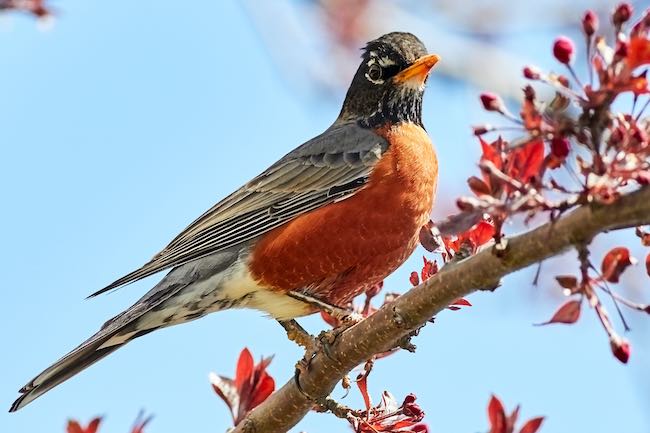
Create a Wildlife Lawn and the Wildlife Meadows to Support Insects and Birds
Many birds such as blackbirds, thrushes, starlings and dunnocks will use a lawn to do much of their hunting for worms, insects and leather jackets. Green woodpeckers may visit too for their favourite food, ants. Avoiding any kind of chemicals which eliminate these food sources is essential to a wildlife lawn, and maintaining good drainage and limiting compaction will help birds probe its surface.
If you have the opportunity to plant a wildflower meadow, or allow your lawn to ‘run wild’, this provides another great wildlife habitat. Some people consider that this looks unkempt and ‘abandoned’, but if managed well and with some wonderful wild meadow flowers, it can look very attractive. It is possible to buy seed mixes from good wildflower merchants that have been formulated for different conditions, including spring meadows, water meadows, butterfly meadows, heavy soil meadows and flowering lawns. Alternatively, but presenting more expense, flowers can be added as plug plants.
Sowing is done preferably in late summer/early autumn or can be done in mid-spring.

Dead Wood – Great for beetles and invertebrates
It is very easy to garden for the obvious and showy wildlife, such as birds, butterflies and wildflowers, and forget the smaller inconspicuous and underloved species such as invertebrates, mosses and fungi. But these can be catered for very simple and can provide great interest for kids and adults alike.
The easiest way to attract this wildlife is by using rotting wood. If you have any large trunks in the garden, saw them up into manageable lengths and pile them in a corner of the garden. You can then leave it for nature to take its course – in under a year, the pile will begin to look very natural as the bark begins to crack and peel. Or you can put a little soil in the joins between the logs and plant some woodland species such as wood sorrel or Herb Robert.
The log pile should become entwined in cobwebs; woodlice will gather under the bark, and you will attract some ‘unwelcome’ guests such as woodlice, snails and slugs (so it best not to build your log pile too near to prized herbaceous borders). But without these invaders, you won’t get the frogs, newts and other predators which will hide in the damp dark log pile by day and emerge to feed at night.
Planting in shade
Because much wildlife gardening involves tree and bush planting, there are often many damp and shady corners in a wildlife garden to fill. Here, nature provides much of the planting inspiration. All the plants of British woodland come into their own.
Good species to plant include:
- Bluebell
- Solomon’s seal
- Yellow archangel
- Dog’s mercury
- Ramsons
- Primrose
- Dog violet
- Wild daffodil
- Bugle
- Herb robert
- Ferns




















